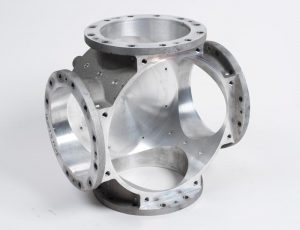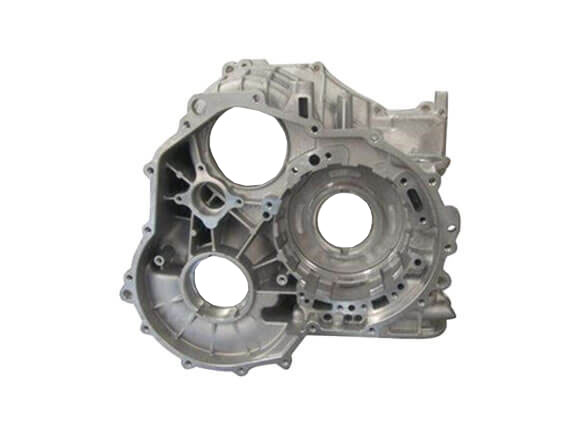Inside the process of how an Aluminum Foundry produces flawless castings
Wiki Article
Discovering the Duty of Light Weight Aluminum Spreading in the Evolution of Industrial Manufacturing
Light weight aluminum spreading has played a pivotal duty fit contemporary industrial manufacturing. Its sturdy and lightweight nature has actually changed the manufacturing of elements for various fields, consisting of vehicle and aerospace. With innovations in casting methods, the industry has seen enhancements in accuracy and effectiveness. As sustainability becomes significantly important, the recyclability of aluminum adds another measurement to its significance. What implications does this have for the future of manufacturing methods?The Origins of Aluminum Spreading
Light weight aluminum casting has a rich history that goes back to the late 19th century when the convenience of aluminum was very first acknowledged. At first, this lightweight metal was deemed testing to function with due to its high melting factor and susceptibility to oxidation. Innovative minds began to discover its capacity, leading to the development of numerous casting techniques. The intro of aluminum into industrial applications marked a substantial pivotal moment in production, permitting for the production of elaborate elements that were formerly unattainable with various other metals. By the very early 20th century, aluminum casting had gained traction in different industries, from vehicle to aerospace, owing to its stamina and lightweight buildings. The establishment of factories and the appearance of aluminum alloys better moved its popularity, setting the phase for future improvements. As a result, the origins of light weight aluminum casting prepared for its indispensable duty in modern industrial production.Key Improvements in Aluminum Casting Techniques
Recent advancements in aluminum spreading techniques have significantly transformed commercial manufacturing. Developments in die spreading processes have actually boosted precision and effectiveness, while the evolution of sand spreading has actually enhanced adaptability and cost-effectiveness. These growths are reshaping the landscape of aluminum production and expanding its applications across numerous fields.Die Spreading Innovations
As industries venture for improved performance and item top quality, pass away casting has actually arised as a centerpiece for development in aluminum casting methods. Recent advancements have actually focused on improving mold layout, temperature control, and product residential or commercial properties, considerably minimizing cycle times and increasing precision. The intro of computer-aided design (CAD) and simulation software application has made it possible for makers to maximize pass away geometries and anticipate possible defects before manufacturing. Additionally, the integration of automated systems has streamlined workflows, boosting consistency and decreasing human mistake. Innovations such as vacuum cleaner pass away casting and semi-solid metal spreading have actually better enhanced the mechanical buildings of aluminum components, bring about lighter, more powerful products. These advancements setting pass away casting as an important element in the competitive landscape of modern-day production.Sand Casting Evolution
Developments in aluminum spreading methods have not been restricted to pass away casting; sand casting has actually also undergone considerable evolution. Commonly reliant on hands-on processes, contemporary sand casting has embraced automation and digital technologies, improving efficiency and accuracy. Innovations such as computer-aided design (CAD) allow for more detailed mold and mildew designs, while 3D printing of sand mold and mildews has transformed production times and minimized product waste. Additionally, the introduction of sophisticated sand blends improves the surface area coating and mechanical homes of cast components. These advancements not just reduced production costs however additionally broaden the extent of applications for sand-cast aluminum products. As markets demand greater quality and faster turnaround, the advancement of sand casting stays pivotal in meeting these modern-day production challenges.The Effect of Light Weight Aluminum Casting on the Automotive Sector
Aluminum spreading has actually reinvented the auto industry by allowing the production of lightweight components that enhance automobile performance. These advancements add considerably to enhanced gas effectiveness, aligning with environmental requirements and consumer demands (Aluminum Foundry). Additionally, the adaptability of light weight aluminum casting promotes style versatility, permitting innovative strategies in vehicle productionLight-weight Component Benefits
The automobile market has actually progressively embraced lightweight parts to boost fuel effectiveness and efficiency. Aluminum spreading has actually emerged as a vital modern technology in this shift, enabling makers to produce parts that are not only lighter however also structurally durable. These lightweight elements add to boosted lorry characteristics, enabling much better handling and acceleration. Furthermore, aluminum's corrosion resistance lengthens the life expectancy of auto components, decreasing maintenance expenses over time. The versatility of light weight aluminum spreading enables intricate styles that were previously unattainable, facilitating innovation in automobile aesthetics and performance. As automobile makers continue to focus on sustainability, using light-weight light weight aluminum cast parts aligns with initiatives to decrease total vehicle weight, marking a substantial advancement in automotive engineering.Boosted Fuel Performance
As the vehicle sector looks for ingenious means to enhance fuel efficiency, light weight aluminum casting has actually become a critical remedy. The lightweight residential or commercial properties of light weight aluminum substantially minimize automobile weight, resulting in enhanced fuel economic climate. By substituting heavier products with light weight aluminum cast elements, suppliers can optimize engine effectiveness and decrease energy usage. This change not just helps in decreasing greenhouse gas exhausts but also straightens with international sustainability goals. Additionally, aluminum's exceptional thermal conductivity allows for better warmth dissipation in engines, better improving efficiency and performance. As a result, automobiles utilizing light weight aluminum cast components can attain higher miles per gallon, interesting eco-conscious consumers and meeting rigid regulative standards. This innovation emphasizes light weight aluminum's important duty in the future of automobile manufacturing.Style Flexibility and Development
While typical materials frequently impose limitations on design, aluminum spreading uses unmatched adaptability that cultivates development in the vehicle market. This adaptability permits manufacturers to create complicated geometries and intricate features that were previously unachievable. Lightweight aluminum parts can be tailored to fulfill details performance needs, improving both car efficiency and appearances. In addition, the spreading process supports fast prototyping, allowing quicker models and minimizing time-to-market for new layouts. As automakers increasingly focus on sustainability, light weight aluminum's recyclability complements style initiatives, advertising environmentally friendly techniques. In general, aluminum casting empowers designers and designers to press the borders of imagination, leading to the advancement of innovative automobiles that fulfill modern customer needs for performance, safety, and environmental duty.Developments in Aerospace With Aluminum Spreading
Light weight aluminum casting has actually reinvented the aerospace market by allowing the production of lightweight yet extremely sturdy components. This innovation enables for the development of intricate shapes that conventional production approaches can not attain, resulting in enhanced efficiency and efficiency in airplane style. Trick applications consist of engine components, structural parts, and elaborate settings up that benefit from aluminum's superb strength-to-weight proportion.Innovations in casting strategies, such as high-pressure die spreading and investment spreading, have improved dimensional accuracy and surface area coating, reducing the requirement for substantial machining - aluminum casting. These developments improve production procedures, reduce lead times, and reduced manufacturing costs, making light weight aluminum parts increasingly attracting aerospace engineers
Additionally, the ability to integrate multiple functions right into a single actors component reduces setting up time and potential points of failing. As a result, aluminum spreading remains to play an important function beforehand aerospace modern technology, adding to the development of much safer, a lot more efficient, and environmentally pleasant aircraft.
Sustainability and Environmental Advantages of Aluminum Casting
The aerospace industry's change towards aluminum spreading not just enhances performance yet additionally contributes favorably to sustainability efforts within commercial production. Light weight aluminum casting deals considerable ecological benefits, largely because of aluminum's intrinsic recyclability. Roughly 75% of light weight aluminum produced is still in usage today, showcasing its potential for circular economic situation practices. Additionally, the power called for to reuse light weight aluminum is markedly reduced-- up to 95% less-- contrasted to generating new light weight aluminum from ore.Furthermore, aluminum casting procedures often generate less waste, as sophisticated methods permit the effective use materials. This minimizes the environmental effect connected with production. The light-weight nature of light weight aluminum additionally results in a lot more fuel-efficient airplane, lowering greenhouse gas exhausts throughout operation. Overall, the integration of aluminum casting in industrial manufacturing not only supports cutting-edge layout and functionality however additionally lines up with worldwide sustainability goals, making it a crucial option for ecologically mindful industries.
The Future of Aluminum Spreading in Manufacturing

In addition, advancements in alloy advancement are expected to boost the residential properties of cast light weight aluminum, making it lighter and more long lasting. These website enhancements will certainly not only fulfill the growing needs of fields like automobile and aerospace however additionally add to environmental objectives by lowering energy usage. Ultimately, the future of light weight aluminum spreading in production appears positioned for a paradigm change, driven by innovation's capacity to innovate and maximize making procedures
Frequently Asked Inquiries
How Does Light Weight Aluminum Spreading Contrast to Various Other Steel Casting Procedures?
Light weight aluminum casting offers benefits such as reduced weight, enhanced rust resistance, and far better thermal conductivity compared to various other metal casting procedures. It might be less appropriate for high-temperature applications than materials like steel or iron.What Are the Main Safety Problems in Aluminum Casting?
The major security issues in aluminum spreading include direct exposure to thaw metal, potential burns, inhalation of harmful fumes, and risks connected with equipment operation. Correct safety methods and individual safety devices are important to alleviate these dangers.Can Light Weight Aluminum Spreading Be Used for Artistic Purposes?
Light weight aluminum casting can undoubtedly be utilized for creative purposes. Musicians often value its versatility, lightweight nature, and capability to catch complex information, permitting for the production of both ornamental and practical pieces that display creative thinking and workmanship.What Are the Expenses Connected With Light Weight Aluminum Spreading?

Exactly How Has Aluminum Spreading Influenced Global Manufacturing Trends?
Aluminum spreading has actually substantially affected worldwide manufacturing trends by offering lightweight, resilient elements, lowering production expenses, and enhancing design versatility. Its fostering across different markets has streamlined procedures and cultivated advancement, shaping modern production methods worldwide.Light weight aluminum spreading has an abundant background that dates back to the late 19th century when the adaptability of light weight aluminum was very first identified. As markets undertaking for boosted effectiveness and product quality, pass away spreading has emerged as a focal point for innovation in light weight aluminum casting methods. Technologies such as vacuum pass away spreading and semi-solid steel spreading have even more improved the mechanical residential properties of light weight aluminum components, leading to lighter, stronger items. Improvements in aluminum casting techniques have actually not been restricted to pass away spreading; sand spreading has additionally undertaken significant evolution. Aluminum casting offers significant ecological benefits, largely due to light weight aluminum's intrinsic recyclability.
Report this wiki page